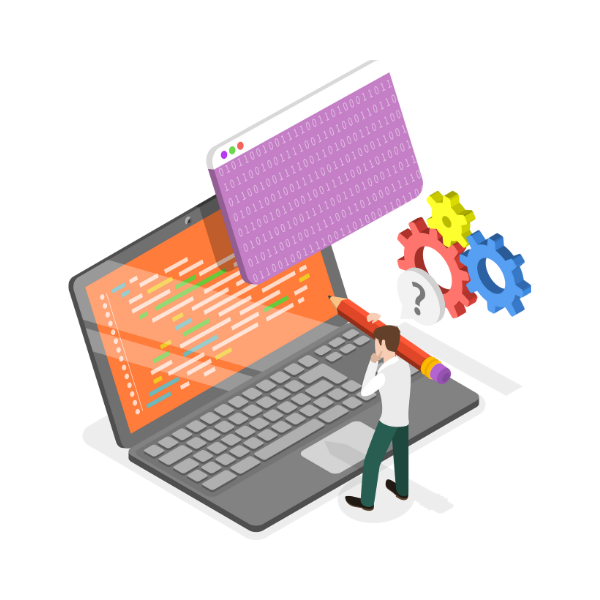Table of contents
Imagine this: You’re ready to make music but are staring at a long list of music production software and feeling a little lost. FL Studio, Ableton Live, Logic Pro—where do you even start?
It feels like you have to choose the “perfect” one, but the truth is, there’s no magic answer.
The secret?
Pick any DAW that feels right for you and stick with it. Because, in the end, it’s not the software that makes the music—it’s you.
In this guide, we’ll explain how to choose the DAW that best suits you and, more importantly, how to master it to create the music you love and enhance your music production journey.
🗝️ Key Takeaways
- All DAWs Do the Same Job – Each DAW lets you record, edit, and arrange music; the best choice is the one you feel most comfortable using.
- Test Before You Commit – Many DAWs offer free trials, so take your time to experiment and see what feels good to you.
- Stick With One DAW – Constantly switching DAWs can slow down your progress. Pick one and master it to become more efficient and creative.
- The DAW Isn’t What Makes Your Music – The software is just a tool. What matters most is how you use it to craft your sound.
- Focus on Making Music – Fancy features won't make you a better producer; learning the basics and honing your craft will.
What’s a DAW and Why You Need One?
So, what exactly is a DAW, and why does it matter to you as a music producer? A DAW (Digital Audio Workstation) is the software you use to make your music. It’s the tool where you’ll spend most of your time recording, arranging, and editing your tracks. In short, it’s where your ideas turn into actual music.
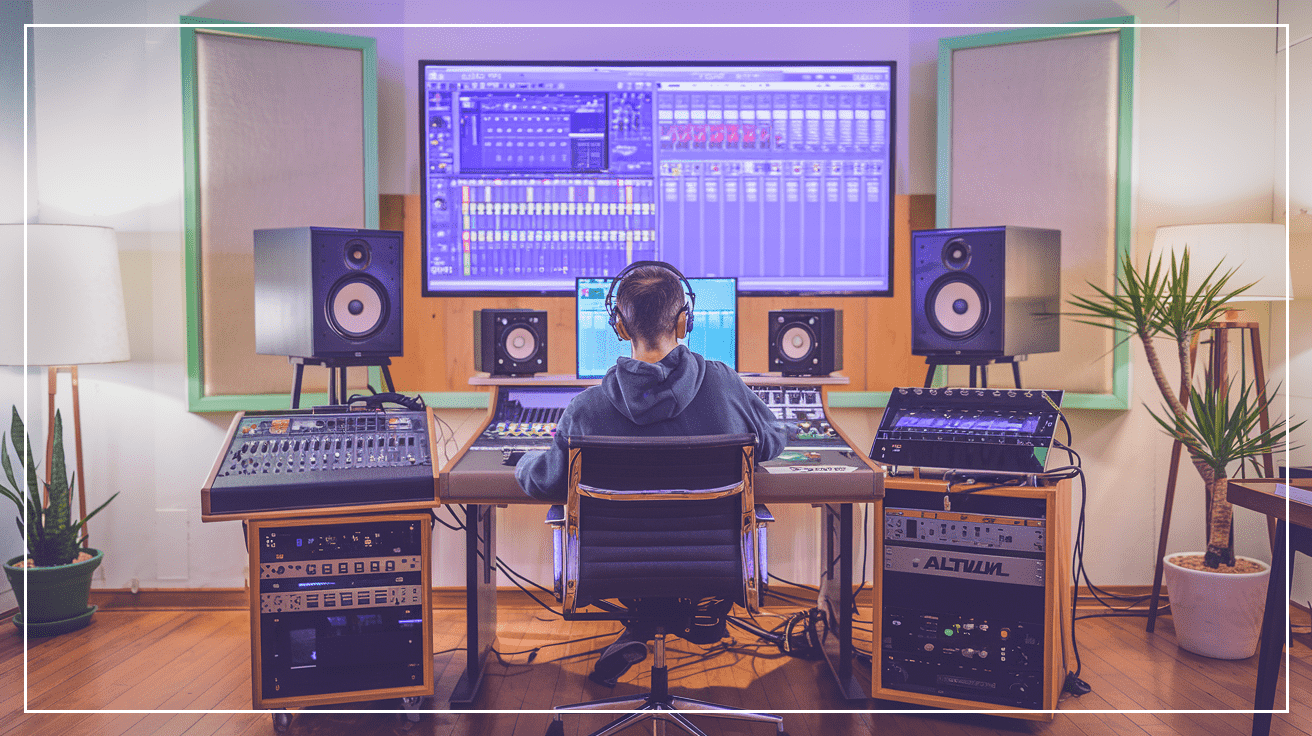
Without a DAW, making professional-sounding music would be nearly impossible. You need it to record instruments, mix your sounds, and export the final product.
DAW — where ideas turn into music.
Leading DAWs have incorporated audio recording capabilities alongside other functionalities for composing, arranging, and mixing music, thereby catering to a range of needs for both live musicians and producers. Many DAWs come with built-in software instruments that can add depth and variety to your music.
Why do you need one?
Think of it like this: If you’re serious about creating music, a DAW is your workspace. It’s where everything happens—from writing your first note to polishing your final mix. Whether recording your voice, making beats, or crafting electronic music, you need a DAW to assemble all those pieces. It’s the central hub that keeps your creativity organized and moving forward.
You can create professional music no matter your choice. You don’t need a different DAW for every genre or sound. Once you pick one, it will grow as you learn, allowing you to focus on making music instead of worrying about switching software.
Finally, a DAW isn’t just a tool; it becomes your creative partner. The more you use it, the more it becomes second nature. You’ll start building your workflow, figuring out what sounds right, and becoming faster at translating your ideas into actual songs. That’s why choosing the right DAW—and sticking with it—is key to growing as a producer.
🛝 Think of a DAW Like Your Music Playground
A DAW is like your own personal playground for sounds. Imagine having a space to explore, experiment, and shape your music without limits. Whether recording instruments, layering beats, or adding effects, the DAW is where it all comes together. Like kids in a playground, try different activities—slides, swings, climbing—you can explore different elements of music production in your DAW.
The best part?
There are no rules on what to create.
You’re free to play and discover your sound.
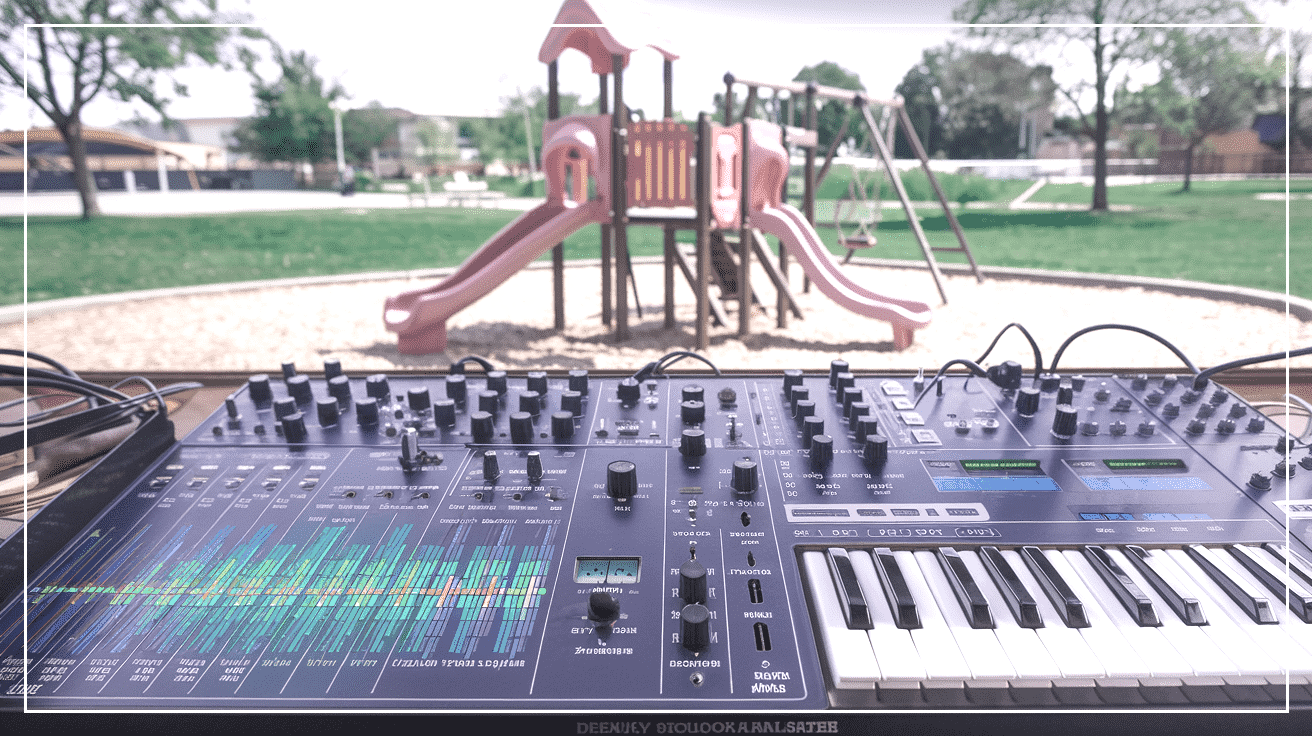
Your DAW isn’t just a tool; it’s your home base for music-making. Everything happens here, from capturing your raw ideas to building them into polished tracks.
Want to record your guitar?
Easy. Need to add a beat?
Just a few clicks.
Feeling creative with effects? Your DAW has them ready to use.
It’s a space designed for you to experiment, fail, try again, and eventually create something great. You can experiment with different sounds and textures with virtual instruments, enhancing your creative process.
It doesn’t matter if you’re just starting out or have been producing for a while; the more time you spend in your DAW, the better you get. You’ll discover new tricks, find your workflow, and build a routine that helps you make music faster and more naturally.
A DAW becomes more than software—it becomes your creative sandbox, where your ideas become reality.
🛠️ Not All DAWs Look the Same, But They Do the Same Job
At first glance, DAWs might look very different from one another. Some have many buttons and menus, while others keep things simple and clean. Don’t let that scare you—they all do the same job. Whether you’re using FL Studio, Ableton Live, Logic Pro, or any other DAW, the core functions are the same: recording, editing, and arranging music. No matter which one you pick, you can create a full song from start to finish.
Their interface sets DAWs apart—how they look and feel. Some DAWs might seem more complicated, but that doesn’t improve them. It’s all about what feels good to you. If one DAW looks inviting or makes more sense when you’re clicking around. It’s like choosing between different kinds of bikes. They all get you where you need to go, but you’ll feel more comfortable with one that fits you best.
Most DAWs also offer robust MIDI editing capabilities, allowing you to fine-tune your digital compositions.
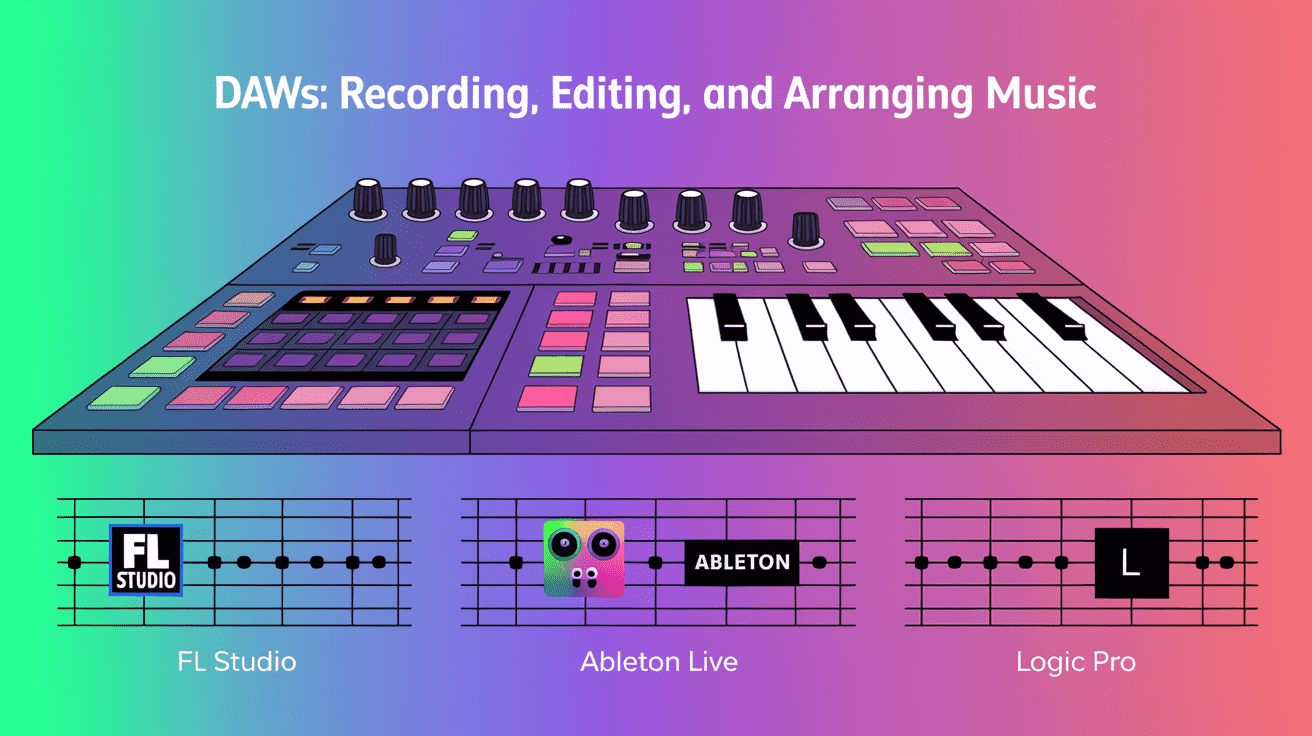
It’s less about how flashy the DAW looks and more about how quickly you can make music. Once you get the hang of the basics—recording audio, arranging tracks, and adding effects—you’ll see that every DAW is designed to do the same thing: help you bring your music to life.
☝️ You Don’t Need Them All, Just One
You’ve probably heard about tons of DAWs and might feel you need to try them all. But here’s the truth: you don’t need them all. Choosing one DAW and sticking with it is often the best approach. The more you use one DAW, the more familiar it becomes, and the faster you can turn your ideas into real music. It’s not about which DAW is the most popular or has the most features—it’s about how well you learn to use the one you choose.
Many DAWs come equipped with drum machines essential for creating beats and rhythms.
Jumping from one DAW to another will only slow down your progress. Switching DAWs is like learning a new language. It’s time-consuming and frustrating when you realize you have to start from scratch. But if you pick one DAW and stick with it, you’ll build your skills faster. Over time, you’ll get to know every shortcut and every tool, and it’ll feel like second nature to make music with it.
Remember, mastery comes from consistency.
The more you practice within one DAW, the more you’ll grow as a producer. Plus, every DAW has plenty of features to help you create pro-level music—you just need to learn how to use them effectively. So don’t get caught up in trying every new tool. Pick the right one and focus on getting really good at it.
The Big Names in DAWs (And Why They Matter)
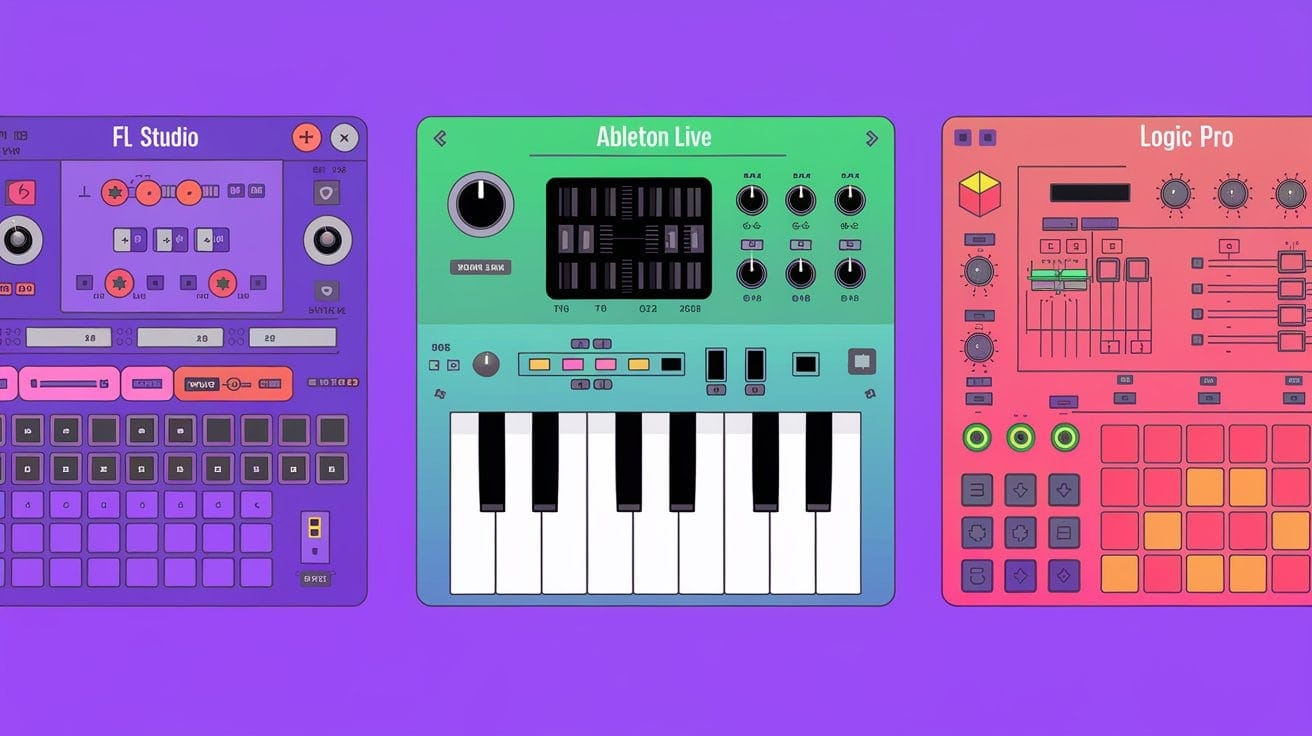
You’ll hear a lot about the big names in DAWs, such as FL Studio, Ableton Live, Logic Pro, and Pro Tools. These DAWs have built reputations as reliable tools for both beginners and professionals. They’ve become standards in the industry because of their features, flexibility, and ability to handle professional-level production.
- FL Studio: Known for easy beat-making and a loop-based workflow.
- Ableton Live: Shines in live performance and is flexible for electronic music.
- Logic Pro: Packed with a deep sound library and industry-standard plugins, it offers a smooth workflow.
- Pro Tools: The go-to DAW for professional studios, especially for recording bands.
- Digital Performer: One of the earliest sequencers to support MIDI, it has evolved to include digital audio support. It remains relevant on both Windows and Mac due to its exceptional scoring capabilities and MIDI integration.
But here’s the key: you don’t need to follow the hype. Just because these are popular doesn’t mean they’re the best for you. The right DAW is the one that feels comfortable and helps you create without friction.
Types of DAWs
Regarding Digital Audio Workstations (DAWs), there’s no one-size-fits-all solution. Each DAW has different features and workflows to suit various music production styles. Whether you’re into electronic beats, live recordings, or a hybrid of both, understanding the types of DAWs available will help you choose the right one to bring your musical vision to life.
💡 Understanding Different Categories of DAWs
When choosing a digital audio workstation (DAW), it’s essential to understand the different categories available. DAWs can be broadly classified into several types, each catering to specific needs and preferences. Here are some of the main categories:
- Linear DAWs: These DAWs follow a traditional, linear workflow, where tracks are arranged in a timeline, and editing is done sequentially. Examples of linear DAWs include Pro Tools, Logic Pro, and Cubase. These are great for those who prefer a structured approach to music production, making it easier to see the entire project from start to finish.
- Non-Linear DAWs: These DAWs offer a more flexible, non-linear workflow. Tracks can be arranged non-sequential, and editing can be done more freely. Examples of non-linear DAWs include Ableton Live, FL Studio, and Bitwig Studio. This type of DAW is perfect for electronic music producers who enjoy experimenting with loops and clips.
- Hybrid DAWs: These DAWs combine elements of both linear and non-linear workflows, offering a flexible and adaptable approach to music production. Examples of hybrid DAWs include Studio One and Digital Performer. They provide the best of both worlds, allowing you to switch between structured and free-form workflows as needed.
- Specialized DAWs: These DAWs are designed for specific tasks or genres, such as post-production, live performance, or hip-hop production. Examples of specialized DAWs include Nuendo, Reason, and ACID Pro. If you have a niche focus, these DAWs can offer tailored tools and features to enhance your workflow.
- Free and Open-Source DAWs: These DAWs are available at no cost and are often developed by user communities. Examples of free and open-source DAWs include Audacity, Cakewalk Sonar Home Studio, and GarageBand. They are excellent for beginners or those on a tight budget, providing essential features without the financial commitment.
Choosing a DAW is all about understanding your specific needs and preferences.
Here are key factors to consider:
- Genre: A non-linear DAW like Ableton Live or FL Studio is perfect if you're producing electronic music. These DAWs seamlessly handle loops and virtual instruments, making them ideal for beatmakers and electronic producers. If you’re producing rock or pop music, a linear DAW like Pro Tools or Logic Pro offers more robust audio recording and editing tools for live instruments and vocals.
- Workflow: Cubase or Studio One might be your best choice if you prefer a traditional, structured approach. These DAWs provide a clear, linear workflow that makes arranging and editing straightforward. For a more flexible, non-linear workflow, consider Ableton Live or Bitwig Studio, which allows more freedom for improvisation and creativity.
- Budget: On a tight budget? Consider free or open-source options like Audacity or GarageBand. These DAWs offer the essential tools at no cost, making them great for beginners. If you’re ready to invest in a professional-grade DAW, Pro Tools or Logic Proallows offer advanced features and a comprehensive toolset for more polished productions.
- Operating System: Mac users may prefer Logic Pro or Ableton Live, optimized for macOS. FL Studio or Cubase delivers excellent performance on Windows, ensuring smooth workflows.
- MIDI vs. Audio Editing: If you’re focused on virtual instruments and MIDI editing, DAWs like Ableton Live or FL Studio excel with powerful MIDI tools and a wide range of virtual instruments. If audio recording and editing is your priority, Pro Tools or Logic Pro provide advanced audio capabilities and high-quality recording features.
How to Choose the Digital Audio Workstation (DAW) You'll Stick With.
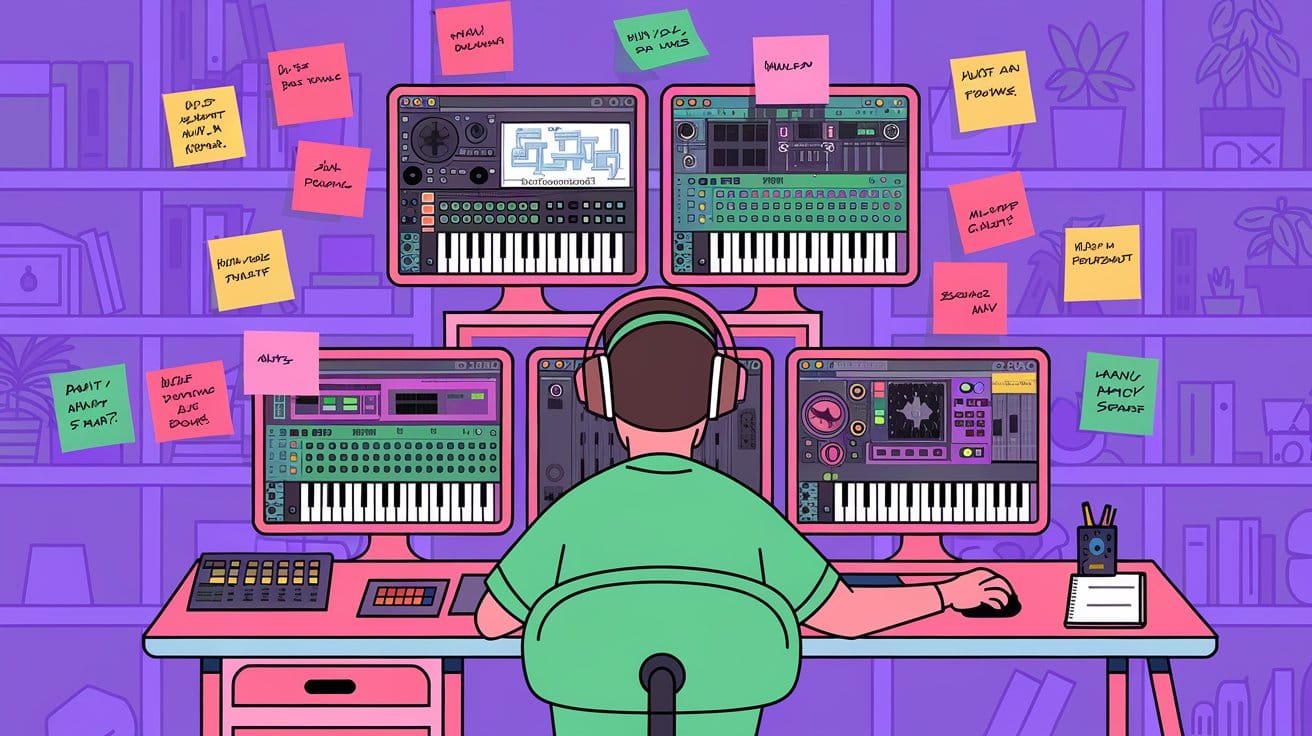
Choosing your DAW is a personal journey—it’s all about finding what feels right for you. Many DAWs offer free trials, allowing you to test the waters and see which one clicks. Take your time with this process. Don’t rush. Spend a few hours with different DAWs, and consider how they fit your creative flow.
🎵 What’s Your Music Style?
Some DAWs are better for certain genres. Ableton Live might feel better for electronic music, while Studio One could suit singer-songwriters.
Think about what work you’ll do:
- Recording live audio (vocals, instruments), choose a DAW that makes it easy to capture and edit. For recording audio, ensure the DAW offers high-quality recording and editing tools.
- Building tracks with MIDI (digital sounds, beats) requires a DAW optimized for MIDI editing and control.
- Some DAWs, like Ableton Live, are great for audio and MIDI, offering flexibility no matter what you create. Additionally, consider the availability and quality of software instruments, as they can significantly enhance your workflow and creativity.
Also, consider your setup:
- Are you on a Mac or PC? Some DAWs, like Logic Pro, are Mac-only. Others, like Ableton Live, work on both systems, giving you more freedom.
📑 Start Simple, Grow With It
You don’t need to know every button at first. Start with the basics and learn more as you go.
Once you’ve picked a DAW, the key is to stick with it. Master the basics first: recording, arranging, and adding effects. Then, as you grow, explore more advanced features like automation and sound design. Switching DAWs can slow your progress—mastery comes from consistency.
Mastery comes from consistency.
Key Considerations:
- Test a few DAWs with free trials.
- Choose based on your workflow (audio vs. MIDI).
- Stick with one DAW to build speed and skill.
- Mac or PC compatibility matters.
🔑 Key Features to Consider
When selecting a digital audio workstation (DAW), several key features can significantly impact your music production experience. Here are the most important aspects to keep in mind:
- Audio and MIDI Editing: A robust DAW should offer comprehensive audio and MIDI editing capabilities. Look for features like clip editing, comping, and detailed MIDI control, allowing you to precisely fine-tune your recordings and sequences. Whether you’re tweaking a vocal take or adjusting a MIDI drum pattern, these tools are essential for crafting professional-sounding tracks. Ableton Live and Logic Pro excel in these areas.
- Virtual Instruments: Many DAWs have a suite of built-in virtual instruments, such as software synthesizers, drum machines, and samplers. These tools can add depth and variety to your music without additional plugins. For instance, FL Studio is renowned for its extensive library of virtual instruments, making it a favourite among electronic music producers.
- Audio Interfaces: Your DAW should seamlessly integrate with your audio interface, ensuring you can record high-quality audio. Compatibility with various interfaces is crucial for capturing everything from vocals to live instruments with clarity and detail. Pro Tools is widely regarded for its superior integration with audio hardware.
- MIDI Controller Support: If you use a MIDI controller, ensure your DAW supports it. This feature lets you easily control virtual instruments and effects, enhancing your workflow and making the music production process more intuitive. Ableton Live is particularly known for its fluid interaction with MIDI controllers, making it perfect for live performances and studio production.
- Effects and Processing: A great DAW should include a comprehensive range of built-in effects and processing tools, such as EQ, compression, and reverb. These are critical for shaping your sound and achieving a polished mix. Ableton Live and Logic Pro offer extensive effects suites, making them versatile for studio and live settings.
- Collaboration Tools: If you collaborate with other musicians or producers, look for a DAW that supports easy collaboration. Features like cloud sharing and real-time collaboration can streamline working with others. DAWs like Studio One and Pro Tools are known for their powerful collaboration features, allowing seamless project sharing and workflow integration.
Considering these key features, you can choose a DAW that meets your current needs and grows with you as you advance in your music production journey. Each DAW has its strengths, so explore the one that fits your style and technical requirements.
🖥️ Mac vs. PC: Choosing the Right Platform
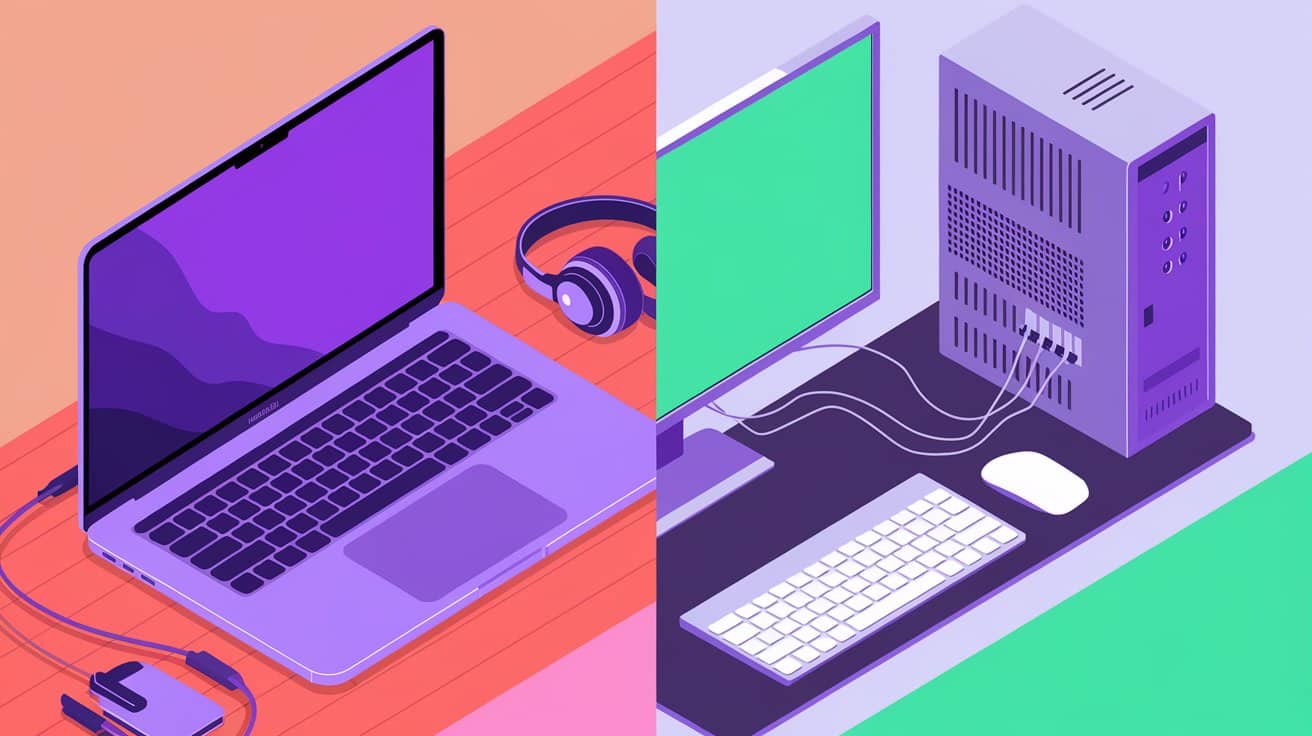
One of the most important decisions when selecting a DAW is Mac or PC. Both platforms have pros and cons the right choice will depend on your specific needs and preferences.
- Mac: Macs are renowned for their stability and ease of use, making them ideal for musicians who want a hassle-free experience. Popular DAWs like Logic Pro and Ableton Live run smoothly on Mac. The macOS environment also offers seamless integration with other Apple products, which is a big plus if you’re already in the Apple ecosystem. Additionally, Macs are less vulnerable to viruses and malware, providing a secure platform for music production.
- PC: on the other hand, PCs offer greater flexibility and customization options. specific needs. DAWs like FL Studio and Pro Tools work seamlessly on PCs. The wider range of hardware options allows you to build a system that fits your budget and performance requirements. PCs are also more affordable than Macs, making them a great choice for musicians on a tight budget.
Key Considerations:
- Mac: Stability, integration with Apple products, security.
- PC: Customization, hardware variety, affordability.
Which Should You Choose?
The choice between a Mac and a PC comes from personal preference and budget. If you’re already invested in the Apple ecosystem and value stability, a Mac is likely the better option. However, if you want flexibility in hardware and want to optimize for cost, a PC might be more suitable.
Whichever platform you choose, ensure it supports your DAW and meets the hardware requirements for optimal performance. Both platforms can handle professional-level music production—it’s all about finding the right fit for your workflow and needs.
🐣 What Makes a Suitable DAW Software for Beginners?
As a beginner, choosing the right digital audio workstation (DAW) software can be overwhelming. With so many options available, knowing where to start is hard. Here are some key factors to consider when choosing a DAW software for beginners:
- Ease of Use: A good DAW for beginners should be easy to use and navigate. Look for a DAW with a user-friendly interface and intuitive controls. For instance, FL Studio is known for its straightforward visual workflow, making it an excellent choice for those new to music production.
- Tutorials and Resources: A DAW with good tutorials and resources can make a big difference for beginners. Look for a DAW with a comprehensive user manual, video tutorials, and online support. Ableton Live, for example, offers a wealth of tutorials and an active online community, providing ample learning opportunities for newcomers.
- Cost: As a beginner, you may not want to break the bank on a DAW. Look for a DAW that offers a free trial or an affordable pricing plan. Many DAWs, like Presonus Studio One, offer entry-level versions that provide essential features at a lower cost, allowing you to get started without a significant financial investment.
- Features: While you may not need all the advanced features of a professional DAW, you’ll still want one that offers a range of features to help you get started. Look for a DAW with built-in instruments, effects, and editing tools. This will allow you to experiment and learn without needing additional plugins or software.
- Community Support: A DAW with a strong community of users can be a great resource for beginners. Look for a DAW with an active forum, social media groups, and online meetups. Engaging with a community can provide valuable insights, tips, and support as you navigate your music production journey.
Some popular DAWs for beginners include Ableton Live, FL Studio, and Presonus Studio One. These DAWs offer a range of features and resources to help you get started with music production. By choosing a DAW that meets your needs and provides ample learning resources, you’ll be well on your way to creating your first tracks and developing your skills as a music producer.
Stick With Your Choice (Why Switching Is Hard)
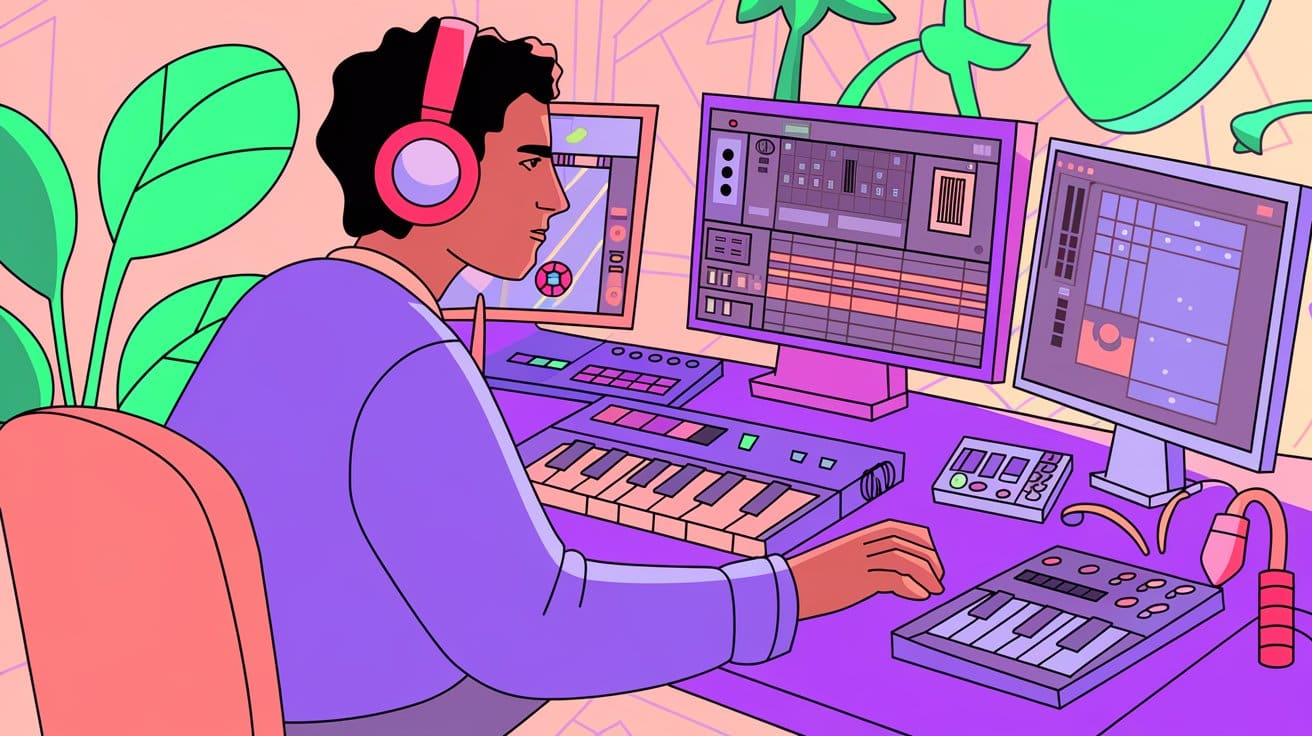
The key to choosing a DAW is finding one that feels like second nature. You want a DAW that doesn’t get in your way but elevates your creativity. Ableton Live, for example, is known for its intuitive interface and fluid workflow, especially when blending live performance with studio production. Whether recording live vocals or programming beats, it offers a smooth user experience that grows with you.
Once you’ve found your DAW, stick with it. Jumping between DAWs can feel like starting over, slowing down your progress. The more time you spend in one DAW, the faster you’ll become. You’ll learn shortcuts, develop your own workflow, and unlock new levels of creativity. Start with the basics—recording, editing, arranging—and expand as you go. Mastery takes time; sticking with one tool will help you reach that level faster.
It’s not about the features— but how you use them.
Your DAW is a tool, but the music? That’s all you.
🎓 Learning a DAW Takes Time (And That’s Okay)
When you first open your DAW, it might feel like stepping into a new world. All the buttons, options, and features can seem overwhelming. But here’s the truth: that’s normal. No matter how experienced, every producer was once where you are, staring at their DAW, unsure of where to begin. The good news is that with time and practice, it gets easier.
Don’t get discouraged if you don’t master it overnight. Learning a DAW is like learning an instrument—it takes patience, repetition, and exploration. Start with recording, arranging, and using a few effects. You'll naturally explore the more advanced features as you get more comfortable. There’s no rush. The more time you spend inside your DAW, the more intuitive it will become, and soon, you’ll know it inside and out.
Remember, every new skill takes time. It’s easy to get frustrated when things don’t work immediately or when you see others producing polished tracks. But keep in mind that everyone’s learning curve is different. Focus on small wins—like figuring out how to record your first track or mastering a simple effect. Celebrate those milestones because each step brings you closer to mastering your DAW.
The key is consistency. Stick with it, and don't jump between DAWs when things get tough. Mastering one DAW completely will speed up your workflow and help you focus more on your creativity than the technicalities.
🖍️ Switching DAWs is Like Learning a New Language
Think of your DAW as a language. When you first start using it, you’re learning the “words” (features) and “grammar” (workflow). The more you practice, the more fluent you become. But switching to a new DAW is like learning a new language—you must relearn everything from scratch. Sure, you might understand the basics of music production, but every DAW has its own layout, shortcuts, and workflow, which means starting over.
Switching DAWs may seem tempting, especially when you hear about the latest features in other programs. But here’s the truth: it slows you down. Every time you change DAWs, you lose momentum because you need to relearn the new system. Instead of focusing on your music, you’re back to figuring out where everything is. This not only delays your progress but can also frustrate your creative flow.
The best producers are the ones who stick to one DAW and master it. The more familiar you become with your DAW, the faster you work. You’ll know exactly where to find what you need, and your process will feel smooth and natural. Mastery allows you to focus on the music, not the software. So resist the urge to jump ship. The more time you invest in one DAW, the more it becomes an extension of your creativity, allowing you to produce faster and better.
🖌️ Mastery Beats Chasing the Next Big Thing
Being great at one DAW is way better than being average at many. Focus on mastering what you have.
Some of the best producers and mixing engineers stick to older DAWs and plugins—not because they’re outdated, but because they’ve mastered them completely. They know true power lies in deep knowledge of their tools, not chasing the latest, flashiest software. With mastery comes speed, confidence, and better results.
Newer producers often jump to the next shiny DAW or plugin, hoping it will improve their sound. But switching tools just slows you down. Mastery of one DAW will always beat being average at many. The pros use their familiar tools because they can focus on the music, not on learning new features.
Commit to what you have instead of constantly looking for the next big thing. Dive deep into your DAW, learn every feature, and make it your own. In the long run, mastery will take you further than any new tool ever could.
The End Goal: Making Music That Sounds Good
The DAW you choose is just a tool.
What really matters is the music you create.
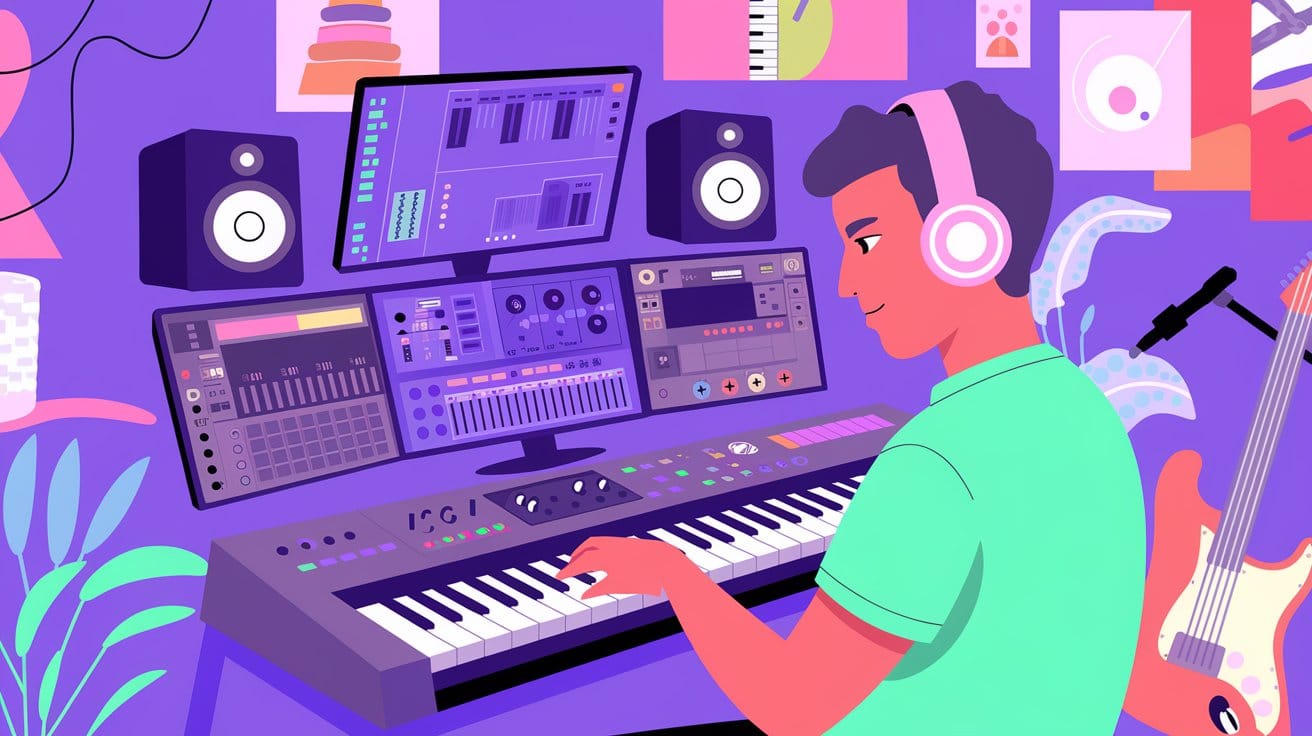
Your DAW won’t magically make your tracks sound amazing—it’s how you use it that counts. The ultimate goal is to make music that sounds good, not just on your headphones but across different systems, from car speakers to streaming platforms.
The DAW you choose is just a tool.
Here’s the secret: It’s not the DAW— it's your ear.
No matter how fancy the software, your ability to listen, tweak, and adjust will make your music shine. Learning to trust your ears is key. Spend time figuring out what sounds good, what feels balanced, and how to make each element of your track sit perfectly in the mix. Your DAW gives you the tools to do this, but you’re the one in control.
Don’t get caught up in the technical stuff. Fancy features and endless plugins won’t improve your music unless you know how to use them effectively. Simplicity is often the key. Focus on learning the basics—EQ, compression, reverb. These core tools will help you shape your sound. Once you’ve mastered them, you’ll find that you can create professional-level tracks even with a minimal setup.
Focus on finishing your tracks. The most common trap for producers is getting lost in endless tweaking and never completing a project. Perfection is the enemy of progress. It’s better to finish a track and move on than to endlessly chase “perfect.” Each finished track teaches you something new, improving the next one. Remember, you grow by finishing, not by constantly tweaking. The best producers are those who consistently complete their projects.
Don’t get caught up in the technical stuff. Fancy features and endless plugins won’t improve your music unless you know how to use them effectively. Simplicity is often the key. Focus on learning the basics—EQ, compression, reverb. These core tools will help you shape your sound. Once you’ve mastered them, you’ll find that you can create professional-level tracks even with a minimal setup.
Remember, the best music comes from you, not the DAW. Whether you’re using Ableton Live, FL Studio, or any other software, the goal is to express your creativity and make something that sounds great to your audience. It’s about creating music that makes you feel proud, connects with listeners, and represents your unique sound.
👂 It’s Not the DAW, It’s Your Ear
Your DAW is just a tool—the real magic comes from your ears. No matter how advanced or expensive your software is, your ability to listen, tweak, and adjust will make your music stand out. Learning to trust your ears is essential for becoming a great producer. Spend time understanding what a well-balanced track sounds like. Ask yourself:
- Does the bass feel too heavy or too light?
- Can you hear all the elements clearly without them fighting for space?
- Do the vocals sit perfectly in the mix?
Your DAW gives you the tools to shape your sound, but you’re the one who controls the result. It’s all about listening critically and making the right adjustments. Master your ear, and no DAW can hold you back.
🎼 Simplicity Is the Key to Professional Sound
Don’t get lost in the technical stuff. Many beginners need the fanciest plugins or the most advanced features, but that’s untrue. The best producers know that simplicity often leads to the best results. Focus on mastering the basics:
- EQ: Balancing frequencies
- Compression: Controlling dynamics
- Reverb: Adding depth and space
These core tools are more than enough to create professional-level tracks. Once you’ve mastered them, you’ll realize that less is more. A clean, simple mix often sounds better than a track with unnecessary effects. Focus on what matters; your music will sound amazing, even with a minimal setup.
🏁 Finish Your Tracks, Don’t Chase Perfection
The biggest trap for producers? Never finishing a track. You might spend hours tweaking and adjusting, trying to make everything perfect—but here’s the reality: perfection is the enemy of progress. It’s far better to finish your track, learn from it, and move on. Each completed project teaches you something new, improving your next track.
Here’s the key: you grow by finishing. Get comfortable moving forward, even if a track doesn’t feel “perfect” to you. The more you complete projects, the faster you’ll improve as a producer. The best producers are the ones who consistently finish their tracks, not those who chase the idea of perfection.
🙌 Your Best Work Comes From You, Not Your DAW
Your DAW doesn’t make the music—you do. It’s easy to get caught up thinking that the software will make your tracks better, but the music comes from your creativity. Whether you’re using Ableton Live, FL Studio, or any other DAW, the goal is to express your unique sound.
Don’t focus on what the DAW can do—focus on what you can do with the DAW. It’s about finding your voice and creating music that connects with listeners. Trust your creativity. The best producers create music that makes them proud, resonates with an audience, and reflects their personality and style.
Popular DAWs and Their Unique Features
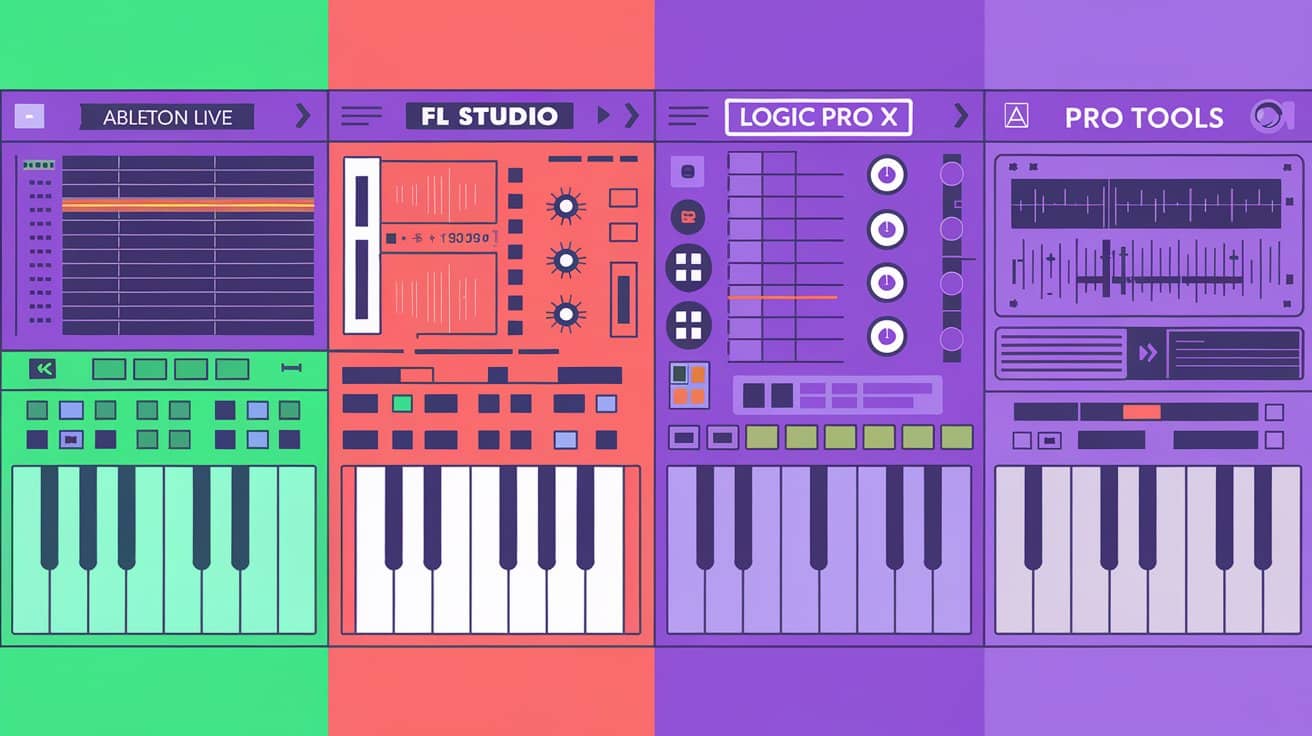
Exploring the landscape of popular DAWs reveals that each one offers unique attributes tailored to various needs and preferences in music production.
We will distinguish Ableton Live, FL Studio, and Apple Logic Pro from their counterparts. This deep dive highlights the standout features of these renowned music creation platforms.
🎬 Ableton Live: Built for Live Performance and Flexibility
Ableton Live stands out for its fluid workflow and live performance capabilities. Ableton Live is your best bet to mix, produce, and perform all in one space. Its Session View allows you to trigger loops and clips on the fly, making it perfect for live performances and improvisation.
Unique features include:
- Session View: Great for non-linear music creation and live sets
- Max for Live: Allows custom plugins and instruments
- Warping: Real-time time-stretching for audio
Ableton Live is ideal for electronic producers and performers who want flexibility and creativity at their fingertips, blending production and performance into one.
🎚️ FL Studio: The Beatmaker’s Dream
If you’re into beat-making or electronic music, FL Studio is often the go-to DAW. Known for its loop-based workflow and piano roll, it’s a favourite among producers who like to create beats quickly and intuitively. FL Studio’s interface is designed to make arranging patterns and loops fast and fun. Its drag-and-drop functionality means you can build entire tracks in minutes.
Unique features that stand out:
- Piano Roll: One of the best in the business for MIDI composition
- Step Sequencer: Great for quick beat creation
- Plugin Support: A wide variety of built-in synths and effects
FL Studio is ideal for producers focusing on beats and electronic music production. It allows you to create quickly and experiment without limits.
💻 Logic Pro: The Studio Powerhouse
For Mac users, Logic Pro is a studio powerhouse. It’s known for its extensive sound library, powerful recording tools, and user-friendly interface. Logic Pro offers a seamless experience for those who record live instruments and vocals, making it perfect for singer-songwriters, producers, and audio engineers who need a DAW that easily handles both MIDI and audio.
Key features include:
- Drummer Tracks: Intelligent virtual session drummer
- Flex Time: Allows precise audio editing and time manipulation
- Sound Library: Thousands of sounds and loops for every genre
Logic Pro is the go-to DAW for producers who want a robust and comprehensive studio experience, making it easy to turn ideas into polished, professional tracks.
⚒️ Pro Tools: The Industry Standard for Audio Recording
When it comes to professional audio recording, Pro Tools is often considered the industry standard. Used in major recording studios worldwide, it's known for its high-quality audio editing and mixing capabilities. Pro Tools is the DAW most engineers and producers rely on if you want to work in a professional recording environment.
Notable features include:
- Advanced Audio Editing: Perfect for precision and control
- Mixing Console: Replicates the feel of working in a real studio
- Collaboration Tools: Allows multiple users to work on the same session
Pro Tools is essential for those aiming to work in professional studios. It allows users to easily handle large recording sessions and demanding audio projects.
Wrapping Up
Choosing the right digital audio workstation is critical in your music production journey. While the options may seem overwhelming, focusing on your unique needs, trying out free trials, and considering the available resources will guide you to the best DAW. Whether you opt for Ableton Live, Apple Logic Pro, or FL Studio, remember that the ultimate goal is creating good music that brings you joy. Master one DAW, leverage its features to enhance creativity, and dive into music production confidently.
FAQ
What is a DAW?
A digital audio workstation (DAW) is essential software for recording, editing, and arranging music, allowing users to effectively translate their musical ideas into a digital format.
It is the primary tool for modern music creation.
Which DAW is best for electronic music?
Ableton Live is the best DAW for electronic music, as its intuitive workflow and non-linear design enhance real-time improvisation and live performance.
For producers focused on electronic genres, it provides a seamless creative experience.
Can I try a DAW before buying it?
Indeed, several Digital Audio Workstations (DAWs) offer demo versions or free trials for users to test before buying. For example, Ableton Live offers a 30-day trial, and Pro Tools also has a free version.
Why is it important to stick with one DAW?
Adhering to a single DAW in music production is vital because it allows full mastery of its functionalities and workflow, boosting your creative output and efficiency. Constantly changing between different DAWs can impede advancement and interrupt your musical creativity.
What are stock plugins, and why are they important?
Stock plugins are essential built-in tools within a Digital Audio Workstation (DAW) that enhance music production by providing effects, synthesizers, and samplers. Their importance lies in their ability to influence creative flexibility and the overall quality of the music output.
